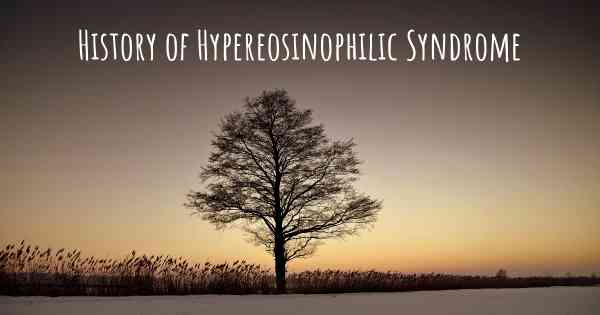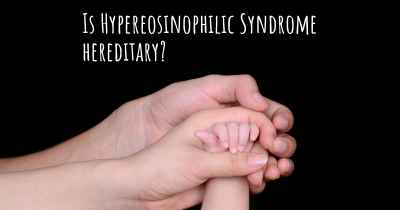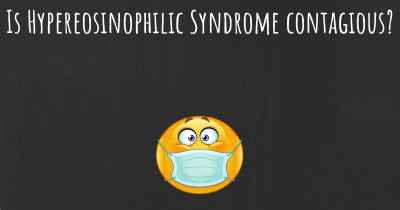What is the history of Hypereosinophilic Syndrome?
When was Hypereosinophilic Syndrome discovered? What is the story of this discovery? Was it coincidence or not?

Hypereosinophilic Syndrome (HES) is a rare disorder characterized by the overproduction of eosinophils, a type of white blood cell. These cells play a crucial role in the immune system's response to parasitic infections and allergic reactions. HES was first described in medical literature in the late 19th century, but it wasn't until the 20th century that significant advancements were made in understanding and diagnosing the condition.
The history of Hypereosinophilic Syndrome can be traced back to the late 1800s when physicians began observing patients with persistent eosinophilia (elevated levels of eosinophils in the blood) and various organ dysfunctions. However, it wasn't until the 1940s that the term "Hypereosinophilic Syndrome" was coined by Dr. Hardy and Dr. Anderson to describe a group of patients with unexplained eosinophilia and multiorgan involvement.
Throughout the mid-20th century, researchers made significant progress in understanding the underlying causes and clinical manifestations of HES. In the 1970s, it was discovered that a subset of HES cases were associated with a specific genetic abnormality known as the FIP1L1-PDGFRA fusion gene. This discovery led to the identification of a distinct subtype of HES called "FIP1L1-PDGFRA-positive HES."
Advancements in diagnostic techniques, such as flow cytometry and molecular testing, have greatly improved the ability to identify and differentiate HES from other eosinophilic disorders. These advancements have also contributed to a better understanding of the disease's pathogenesis and the development of targeted therapies.
Over the years, several classification systems have been proposed to categorize HES based on clinical features, organ involvement, and underlying genetic abnormalities. The World Health Organization (WHO) classification system, last updated in 2008, is widely used today and divides HES into three major categories:
- Myeloproliferative HES: This subtype is characterized by clonal eosinophilia, meaning the abnormal eosinophils are derived from a single clone of cells. The FIP1L1-PDGFRA fusion gene is commonly associated with this subtype.
- Lymphocytic variant HES: In this subtype, eosinophilia is driven by abnormal T cells. It is often associated with autoimmune disorders and can involve various organs.
- Familial HES: This rare subtype is characterized by a hereditary predisposition to eosinophilia and organ involvement. It is often associated with specific genetic mutations.
Today, the treatment of HES primarily focuses on reducing eosinophil levels and managing organ-specific complications. Corticosteroids, such as prednisone, are commonly used as a first-line therapy. However, for patients who do not respond to corticosteroids or have severe disease, targeted therapies like tyrosine kinase inhibitors (e.g., imatinib) have shown promising results.
While significant progress has been made in understanding and managing HES, many aspects of the disease remain poorly understood. Ongoing research aims to uncover the underlying mechanisms, develop more effective treatments, and improve the long-term outcomes for individuals living with this rare disorder.








